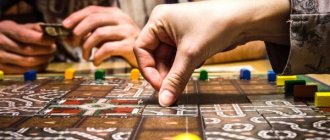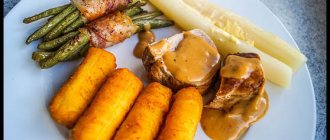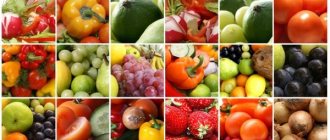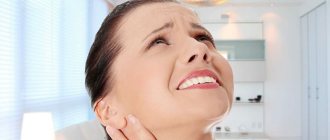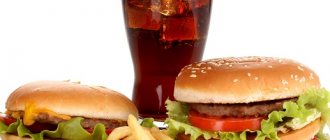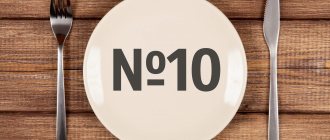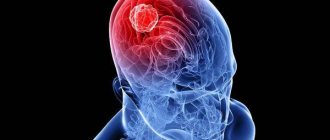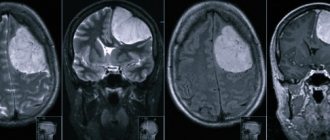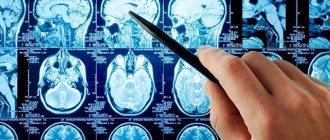Stroke is an extremely dangerous condition that often results in the death of the patient. After the end of brain malnutrition and after the crisis after the disease, the rehabilitation period begins. In addition to the use of physical therapy complexes and the work of specialists, the use of special diets is required. Thus, the body recovers from damage. The recovery period for people who have had a stroke is usually prolonged. And during recovery, it is necessary to follow the recommendations of doctors on the method, frequency of food consumption and calorie content of foods. Nutrition after a stroke is an integral attribute of the rehabilitation process. Without the correct regime and lifestyle, it will be extremely difficult for a person to restore lost functions.
General recommendations
The diet after a stroke must meet the following requirements:
- do not create a large load on the digestive tract;
- do not provoke hypertensive crises;
- provide the body with necessary nutrients;
- prevent the formation of blood clots or atherosclerotic plaques.
Even if patients can chew food on their own, it is recommended to chop the food.
These rules must be remembered by relatives of a stroke patient who strive to provide tastier food to a loved one who has suffered an ischemic attack. But before you cook, you should check with your doctor about what you can eat after a stroke.
General principles of proper nutrition
The specialized diet after the hemorrhagic form of the disease, as well as after an ischemic stroke, is approximately the same.
The principles include the following elements:
- In the first days or even weeks, tube feeding is indicated. Such nutrition allows you to provide the body with the necessary substances if the patient is not able to take food on his own. Also, tube feeding is required if the patient is unconscious (feeding for bedridden patients). The preparation method consists of grinding the products through a meat grinder twice, grinding them with a blender or rubbing them through a sieve. Only liquid food is suitable for tube feeding.
- Mode. It is necessary to develop a clear eating regimen. After an acute cerebrovascular accident, all organs and systems are in dissonance. There are problems with digestion. To ease the work of the gastrointestinal tract, you need to eat by the hour.
- It is worth eating in small portions at each regular meal so as not to overload the digestive tract.
https://youtu.be/zOCUjNUjg3w
Tips for choosing products
A stroke not only limits mobility or impairs mental activity due to damage to an area of the brain. After an attack, the defenses are reduced, and the body becomes vulnerable not only to repeated stroke, but also to other neurological or cardiovascular disorders. And eating after a stroke can either speed up recovery or increase the risk of possible complications. Let's look at which foods help you recover faster, and which foods you should forget about.
Healthy food
After an ischemic attack, a person has limited mobility and often has problems with bowel movements. A diet after a stroke should not only strengthen blood vessels, the heart and the nervous system, but also prevent constipation. It is useful for stroke patients to eat:
- greens (except sorrel and spinach);
- pumpkin crops;
- eggplant;
- cabbage (all varieties);
- onion;
- Bell pepper;
- beet;
- carrot;
- tomatoes;
- lentils;
- porridge (if you are prone to obesity, limit semolina and corn grits);
- vegetable broth soups;
- low-fat dairy products;
- wholemeal bread;
- not rich pastries;
- honey;
- sunflower oils;
- nuts;
- seeds;
- honey;
- green tea.
Be sure to include meat in the patient's diet. Beef and lamb are allowed for meat, and turkey and chicken for poultry. But meat and poultry should be without fat.
It is necessary to add fish and seafood to the diet. Seafood contains many vitamins and Omega-3 fatty acids, which prevent the formation of atherosclerotic plaques.
Don't forget about fruits. Often, the patient’s relatives clarify in detail whether grapes or pomegranates can be eaten, and sometimes they simply bring a parcel containing permitted and forbidden fruits.
In order not to harm a person, let’s look at what fruits you can eat after a stroke:
- apples;
- pears;
- nectarines;
- peaches;
- citrus;
- pomegranate;
- mango;
- kiwi;
- avocado.
We should not forget about berries. Patients are allowed to eat:
- currants;
- gooseberry.
Food should be steamed or stewed. In this case, vegetables and meat must be chopped to reduce the load on the digestive tract.
What you shouldn't eat
For a cerebral stroke, the diet allows the inclusion of a small amount of the following foods:
- fish roe;
- fatty fish;
- spinach and sorrel;
- legumes;
- egg yolk;
- grapes and raisins.
Doctors allow the inclusion of these products in small quantities after a cerebral stroke, but advise doing this as rarely as possible.
It is also recommended to completely remove salt from your diet. If this is not possible, then reduce consumption to 3 g/day.
What food is prohibited?
The diet for stroke patients excludes the consumption of the following products:
- canned food;
- store-bought semi-finished products;
- pickles and pickles;
- smoked meats;
- fatty broths;
- radish;
- radish;
- mushrooms;
- baked goods;
- butter confectionery creams;
- chocolate;
- drinks and sweets with cocoa;
- hot seasonings and spices;
- cheeses;
- full-fat milk and products made from it;
- pork;
- offal;
- sausages;
- animal fats.
Often patients or their relatives ask whether they can drink coffee. It is forbidden. Strong black tea and carbonated drinks are also prohibited.
If you answer which fruits are prohibited during a stroke, then only bananas are prohibited.
If the patient is bedridden, then it is relatively easy to exclude from the diet what cannot be eaten after an ischemic stroke. To do this, it is enough to cook separately and feed in bed.
It is much more difficult to prove to a walking person that not all food can be eaten after a stroke. This causes attacks of resentment and often demonstrative refusal of healthy food. This often occurs in older people.
If in a hospital it is relatively easy to maintain proper nutrition during an ischemic stroke, then after discharge, at home, it becomes difficult. In order to avoid unnecessary conflict, doctors advise not to keep junk food at home, but to eat the same dishes as the stroke patient. Doctors say that the menu for ischemic stroke contains the necessary nutrients. And if you want to eat a banana or sausage, you can do it at work without injuring a sick relative.
Recipes
A balanced diet after a stroke includes dishes in recipes that you can replace ingredients and use them for the whole family. A nutritious diet is not only a remedy, but also an important element of a healthy lifestyle, suitable for children and adults, and this approach to food is especially useful in old age.
First meal
Soups are an essential component of the diet. By excluding foods prohibited during a stroke, you can prepare many healthy dishes for lunch:
- Borsch. Potatoes, carrots and fresh tomatoes are cut into cubes, cabbage is finely chopped, beets are grated. First place cabbage in boiling water or vegetable broth, and after a few minutes - the rest of the vegetables. Beets are added when the vegetables are almost ready. Serve with chopped herbs and a spoonful of sour cream.
- Soup with cereals. Vegetables (potatoes, tomatoes and carrots) are chopped randomly. Cereals (wheat, buckwheat, lentils) are washed; pearl barley requires pre-soaking. Boil the vegetables for about 5 minutes, then add the cereal and heat for another 15 minutes.
- Vegetable puree soup. Prepared from several products or 1 vegetable (zucchini, pumpkin, carrots). All ingredients are boiled until soft. The finished soup is ground in a blender or with a grinder.
Nutrition for microstroke, corresponding to this diet, reduces the risk of progression of the pathology and increases the effectiveness of drug therapy.
Second courses
In addition to cereals, purees and pasta, it is useful to prepare casseroles, adding vegetables or cereals to them. Such dietary dishes are universal. They are suitable for any main meal, and a small portion can be eaten as a snack if necessary. Several variants:
- Cottage cheese casserole. Take low-fat cottage cheese and beat with egg and semolina until it reaches the consistency of sour cream. Leave for 30 minutes for the semolina to swell and place in a thick-walled mold. The curd mass is baked for 45 minutes at a temperature of +200°C.
- Pumpkin and carrot pudding. Vegetables are measured equally (200 g of pulp), chopped and boiled until tender. Adding an egg, 1 tbsp. l. honey and half a glass of semolina, beat the mass with a blender. After half an hour, the settled mixture is placed in a mold and baked at +200°C for no more than 25 minutes.
- Buckwheat casserole with cottage cheese. From 70 g of buckwheat, cook a viscous porridge and, after cooling, mix with half a pack of cottage cheese and 1 egg. Place in a mold and bake for 30 minutes at +220°C.
Meat and fish dishes are prepared independently, avoiding ready-made store food. Nutrition for ischemic stroke and its hemorrhagic type involves the consumption of lean meats. It can be steamed or boiled. After a micro-stroke, you can eat fish baked without adding cooking fats.
An egg is added to the minced meatballs and cutlets; it is useful to dilute the mixture with vegetable puree. Semolina is used for breading.
Dessert
The absence of sweets in the diet is compensated with fruits. Some delicious desserts can be made without sugar and are also suitable for diabetics:
- Paste. Finely chop peeled sweet apples. Boil them until softened with a small amount of water. When the mass becomes homogeneous, rub it through a sieve and place it on a baking sheet in a layer of about 5 cm. It is most convenient to use baking paper. The layer of fruit mass is leveled and dried without closing the door, setting the temperature regulator to +120°C. The hardened layer is turned over and continued to be heated. The marshmallow is ready for cutting into pieces after 2 hours.
- Smoothie. Berry and fruit cocktails are prepared from any fresh ingredients without additives, whipping them in a blender. You can add cottage cheese, natural yogurt, and nuts to the composition.
https://youtu.be/44CcqHf9_oY
In a diet for microstroke, it is better to use whole vegetables and fruits than their juice without pulp. Fiber contains useful substances and helps digestion; in case of extensive lesions in immobilized patients, it helps to normalize stool.
Important! Without giving up bad habits, cigarettes, alcohol, and other stimulants, medications and diet will not help overcome the onset of pathology. A stroke is a signal of the need to completely reconsider your lifestyle and improve it.
Rules for creating a menu
First, you need to take into account the recovery period after a stroke, the timing after the attack and what diet will depend on this.
In the early period, gentle nutrition is necessary, when vegetables and meat are heat-treated and thoroughly chopped. This happens in a hospital, but at home such a diet for ischemic stroke is indicated if swallowing is difficult.
Most ischemic stroke survivors are able to chew food independently by the time they are discharged from the hospital. For such people, the diet at home should not only contain thermally processed food, but also vegetable or fruit salads.
Let's look at what the diet should be like for every day:
Morning meal
- buckwheat porridge with skim milk;
- applesauce;
- green tea with biscuits.
Lunch
- salad of cucumbers, herbs and cabbage;
- curd and rice casserole;
- Orange juice.
Afternoon meal
- vegetarian cabbage soup;
- steamed turkey meatballs;
- mashed potatoes;
- compote.
Dinner
- fish balls;
- oatmeal with water (side dish);
- rosehip drink;
- peaches.
Before bedtime
- drinking yogurt without preservatives.
Taking into account the proposed sample, it is advisable to create a menu for the week. This will help to feed the patient varied, tasty and healthy.
General rules
A stroke is associated with impaired cerebral circulation, so the patient needs proper nutrition to provide the body with substances that stimulate the restoration of brain tissue.
Diet after a stroke includes:
- variety of foods consumed;
- weight control;
- adequate intake of vitamins and minerals;
- dieting on a long-term basis;
- drinking enough water;
- diet.
Nutrition after a stroke should become a way of life for the patient, since regular adherence to the rules of diet and prescribed treatment will make it possible to prevent relapse of the disease.
Vitamins and microelements necessary for successful rehabilitation of the patient
During the recovery period, the patient requires an increased intake of vitamins, minerals and trace elements.
In the complex of rehabilitation therapy the following are important:
| Vitamins, microelements, minerals | Action | Products containing |
| Vitamins B, C, E | Reduce the likelihood of stroke recurrence | Nuts, sunflower seeds, fish, carrots, spinach, broccoli, etc. |
| Polyunsaturated acids | Improves the speed of biochemical reactions in the brain | Walnuts, sea fish and seafood, dried fruits, flax seeds, vegetable oils, cod liver. |
| Folic acid | Stabilizes blood pressure, improves hematopoiesis | Greens, vegetables, nuts, lentils, fish, liver, cottage cheese, fresh milk, cheese, avocado, berries. |
| Potassium, calcium, magnesium, iron, phosphorus, etc. | They affect metabolism, the nervous system, and the transfer of oxygen to brain cells. | Millet, raisins, dried apricots, vegetables, nuts, fruits and berries. |
| Vitamins A, P | Increases the strength of blood vessels | Liver, fermented milk products, leafy greens, berries, seaweed, buckwheat, green tea, yellow fruits. |
| Protein | Promotes the restoration of brain cells. | Dietary meat. |
| Complex carbohydrates | Improve energy metabolism | Porridge, fruits, vegetables. |
| Antioxidants | Affect metabolism, remove free radicals. | Berries, nuts, dried fruits, vegetables, garlic, beets. |
| Anthocyanidins | Activate metabolism, increase vascular elasticity | Berries, vegetables, fruits |
| Beta carotene | Reduces blood pressure | Carrots, sea buckthorn oil, sorrel, fruits, pumpkin, chicory, spinach. |
Five rules of a rehabilitation diet
The diet may vary depending on the health of the patient. In an unconscious state, the body is nourished with the help of solutions that are administered intravenously. In case of complete paralysis, a bedridden patient is spoon-fed. With partial paralysis, the patient is helped to relearn these skills.
Basic diet rules:
- The total number of calories in the daily diet should not exceed 2500 kcal, if you are overweight - no more than 1900-2000 kcal. You need to consider the amount of protein and fat in each serving.
- The meal is divided into 4-5 times, the serving size is no more than 150 g.
- Refusal of salt, especially 2-3 weeks after a stroke. After this period, with the approval of the attending physician, you can gradually introduce it into the diet, but not more than 2-3 g per day.
- Introduction of the “color” menu rule.
- Compliance with the drinking regime, you need to drink at least 1200-1500 ml per day.
Rules for eating
First of all, you need to pay attention to the appetite of patients. Most, depressed by their condition, eat poorly, but some experience a pathological increase in appetite. Lack and excess of food are equally harmful. In the first case, recovery after a stroke will slow down, and in the second, it will lead to obesity.
If a person refuses to eat, it may be because he is worried about his condition or because food without salt seems tasteless. You need to create a comfortable psychological environment, and add a little salt to ready-made dishes before serving.
Foods you should avoid
The list of harmful products is no less extensive:
- Sweet bakery products. They increase the concentration of cholesterol, cause worsening of atherosclerosis and worsen the functioning of the gastrointestinal tract. Therefore, these are harmful products for the heart and blood vessels.
- Sweet products. They increase glucose levels and cause increased insulin production. This process increases blood pressure. After a brain stroke, you should give up sweets.
- Salty food. Causes stenosis (narrowing) of blood vessels in the brain and neck. Salt is definitely not included in the nutritional structure for strengthening blood vessels.
- Fatty fermented milk food products , including butter, kefir, cottage cheese, sour cream.
- Fried foods.
- Fat meat.
- Ethanol. Alcoholic drinks contribute to stenosis of arteries and veins.
- Ketchup, mayonnaise, sauces.
- Coffee, teas. They tone blood vessels and increase tonometer readings.
How to feed a stroke patient
Let's consider the general rules for feeding patients:
- Calm environment. During meals, you need to exclude irritants such as music, loud noise or a running TV.
- Encouraging independence. If a person eats himself, but slowly, then he should not try to feed himself faster. This will reduce confidence in recovery and complicate post-stroke rehabilitation.
- Provide special utensils. Awkward movements when a stroke patient spills tea or pours juice on them have a depressing effect on the patient. Until coordination is restored, it is better to use a children's sippy cup or drink liquid through a straw, and use a deep bowl or glass instead of a plate.
Well, find out in advance what to eat after suffering an ischemic attack. This is necessary so as not to offend the patient with a refusal when a person asks for a treat, but relatives do not know whether they can have seeds, oranges or nuts.
Basic directions of proper nutrition
The optimal diet is prepared not only for the health of the body. The dietitian has a difficult goal to achieve. It consists of a number of tasks. The menu being compiled is aimed at solving these problems.
Among the main tasks:
- Reducing the concentration of cholesterol in the bloodstream. As a result of an increase in the amount of lipid structures in the veins and arteries, fatty deposits known as atherosclerotic plaques are deposited on the walls of blood vessels. They clog the lumen of blood supply structures and prevent normal blood flow. According to statistics, it is such atherosclerosis that causes stroke in 40% of cases (or so). Moreover, the age of the patient does not matter. The primary task of a proper diet is to eliminate hypercholesterolemia.
- Normalization of calorie intake. Excessive calorie intake leads to increased cholesterol concentrations. Excess sweets provokes increased insulin production. What this leads to has already been said.
- Avoid taking substances that excite the nervous system. This is strong tea, coffee, alcohol, especially narcotic substances. All of them have a stimulating effect on the central nervous system.
- Getting rid of salt in the diet. Salt is an extremely dangerous substance for a hypertensive patient, and even more so for a patient who has suffered a cerebral infarction.
- Stabilization of the amount of fluid consumed (drinking regimen) . You should drink no more than one and a half liters of liquid per day. Exceeding the amount leads to edema and increases blood pressure.
https://youtu.be/4q2RGQRaBtg
Drinking regime
Nutrition after a stroke inevitably involves constant fluid intake. This point of the diet should be taken as seriously as possible, since dehydration can lead to increased blood pressure, which, in turn, can cause another, and more extensive, stroke.
You can be guided in calculating the amount of liquid by the following principle: the volume of clean water consumed should be twice as large as the rest of the liquid that enters the body during the day. On average, a patient should drink 2 liters of water per day.
The Importance of Nutrition in Stroke Rehabilitation
Following a certain diet is as important as taking medications. Stroke rehabilitation involves a whole range of measures, where nutrition plays a leading role.
It has been scientifically proven that the lack of proper nutrition in combination with the strongest medications that accelerate recovery somewhat slows down the process. Therefore, it is important to adhere to the basic principles of nutrition and adherence to diet table No. 10.
In addition, continued adherence to dietary recommendations reduces the risk of developing a recurrent stroke several times, which not everyone can survive.
Useful and harmful foods for the brain
The post-stroke diet has the following goals:
- Saturate the body with proteins - the main building components that will accelerate the regeneration of brain cells.
- Reduce the content of cholesterol in the blood - fat that is not able to dissolve, which leads to its settling on the inner walls of blood vessels, provoking atherosclerosis, narrowing the lumen of the vessel and disrupting normal blood flow.
- Resume metabolic processes in brain cells by saturating them with oxygen.
Diabetics after stroke
Stroke and diabetes are closely related. Diabetic patients are 2.5 times more likely to have a cerebral hemorrhage than healthy people. Moreover, in 90% of cases in diabetics it is an ischemic stroke.
In such patients, disturbances in the water-salt balance lead to coarsening of the vessel walls, their narrowing; after a stroke, the recovery process is slowed down, since vascular atherosclerosis slows down the supply of oxygen needed by the brain.
Diet is a forced but necessary measure for recovery. Extremely important:
- completely eliminate salt;
- take potassium to strengthen the walls of blood vessels;
- drink plenty of liquids (water, compotes, weak tea);
- avoid foods with high cholesterol levels;
- eat plenty of fruits and vegetables.
Direct cause-and-effect relationship – stroke develops against the background of diabetes, and not vice versa.
Conclusion: Diet plays a huge role in maintaining a healthy state.
IF THE SICK IS UNDER THE SUPERVISION OF PETS
As a rule, a repeated stroke, especially after a hemorrhagic one, occurs as a result of an increase in blood clotting, when its passage through the vessels slows down. What is typical for those patients whose stroke occurred due to excess weight or consumption of alcohol and cigarettes.
Sometimes it is for these reasons that it becomes difficult for a person to walk and perform any physical activity when irreversible and stagnant processes occur in the body that disrupt motor activity and cerebral circulation. In this case, a stable and proper diet high in fiber and vitamins will have an impact on blood composition and weight loss.
Therefore, together with medications that reduce the formation of blood clots and sedatives, diet will also be an integral part of the rehabilitation process during home recovery.
But a diet is necessary not only for those who have problems with excess weight, even after some time in young boys and girls, symptoms of a stroke can appear with frequent consumption of food that does not require cooking. After all, sometimes, sooner or later, even a strong body can weaken due to the large amount of heavy and unhealthy food eaten.
Dietary prevention of relapse
Gentle nutrition gradually leads a person to a preventive diet, which will need to be followed throughout life. There are several types of feeding that are suitable for patients after a stroke:
- dietary table No. 10 - a domestic development intended for people with diseases of the cardiovascular system;
- DASH diet (Dietary Approaches to Stop Hypertension) is an American nutritional therapy. It was originally developed for prophylaxis, preventing the development of hypertension. Today it is recognized as one of the best diets for healthy people, as well as patients with stroke, myocardial infarction, and diabetes;
- hypocholesterol diet – aimed at combating high cholesterol. A good option for patients after a brain stroke who have high levels of harmful sterol;
- The Mediterranean diet is a diet typical of southern European countries. It does not contain strict restrictions, but presupposes a certain structure of the diet.
https://youtu.be/r_DYyMA-gP0
You can also develop your own feeding system based on 10 basic principles.
Eat small meals often
One of the main tenets of a healthy diet is that at a normal weight, the number of calories consumed should not exceed energy expenditure. If you are overweight, you must expend more energy than you consume. The easiest way to follow this rule is to eat 5-6 times a day in small portions. You should have 3 full meals (breakfast, lunch, dinner), 2-3 snacks. This helps control hunger and prevent overeating.
Limit your salt intake
Excessive sodium intake contributes to fluid retention, the development of edema, and increased blood pressure. The World Health Organization recommends consuming no more than 5 g of salt daily, the main source of this mineral. You can reduce its use:
- using spices that give the dish a richness of taste;
- giving up foods that contain an excess of it: chips, crackers, nuts, salted fish, pickles, smoked meats, canned food;
- choosing foods that are low in sodium.
Reduce sources of saturated fat
There are two types of fatty acids:
- Saturated ones – contribute to an increase in bad cholesterol, weight gain, and the formation of atherosclerotic plaques. Contained mainly in products of animal origin: red meat, cheeses, cream, butter, fatty cottage cheese, lard, poultry skin, as well as palm and coconut oils. It is better to limit the consumption of all of these products.
- Unsaturated – necessary for the normal functioning of the body, they are part of fatty fish varieties: mackerel, mackerel, herring, salmon, anchovy, sprat, tuna); plant foods: a variety of oils, nuts, seeds, avocados. Unsaturated fats include omega fatty acids, which lower cholesterol and triglyceride levels and promote efficient heart function. To meet the body's needs for omega acids, the American Stroke Association recommends that all people eat fatty fish at least 2 times a week.
Comments
We fought this disease. My grandmother had a hemorrhagic stroke, until we encountered it, I didn’t even know what it was. The rehabilitation was long and difficult for everyone, it was painful for my grandmother to drink and eat, she had a headache, and she couldn’t speak well. We read that there is such a drug as Headrix. We asked the doctor about it, the doctor approved the use of this drug. First of all, it is convenient to take because it is drops and not tablets. Drop some water into the glass and drink. After starting the supplement, my grandmother felt much better the very next day. The headache didn't hurt as much and her overall health improved. And after almost two weeks she swallowed food normally, the pain in her head and throat went away. I recommend this drug!
Prohibited Products
All fatty meats (pork, lamb, ducks and geese) should be completely excluded from the diet; any by-products, semi-finished products, industrially produced pates and sauces, smoked and sausage products, ready-made minced meat, lard, and lard are also not recommended. Products from the following list are also prohibited:
- salted, dried or dried, marinated fish, sushi;
- fats from meat, mushrooms and fish;
- full-fat cottage cheese, sour cream and cream, processed or spicy cheese;
- baked goods, cakes and pastries, puff pastry products, sweets, ice cream;
- alcohol, carbonated sweet drinks, coffee, strong tea.
To prevent bloating, you do not need to use fresh bread, milk, cabbage, especially raw cabbage, radishes, grapes, peas, and beans in the early post-stroke period.
Diet for hemorrhagic stroke
The development of hemorrhage in the brain is associated with high blood pressure in the arteries. Therefore, the main principle of nutrition for this disease is to limit foods that can cause hypertension. These include table salt, broths (except vegetable broths), caffeinated drinks, any canned hot sauces, marinades and pickles. It is recommended to eat as many foods as possible that contain beneficial microelements:
- potassium – raisins, bananas, figs, dates, apricots, dried apricots, baked potatoes;
- magnesium – carrots, apples, nuts, oatmeal, millet and buckwheat, bran.
A special magnesium diet may be prescribed for 3 days. It includes: first courses prepared with bran decoction, porridge from recommended cereals with bran, rosehip decoction, apricot juice, beetroot and prune salad, cottage cheese with carrot and apple puree. Meat can be eaten no more than once a day, strictly in boiled form.
Features of organizing the diet of bedridden patients
From the first days, it is important to understand that the diet for bedridden patients with partial or complete paralysis, capable of swallowing food independently, and those with impairment of this function may differ.
https://youtu.be/moiwypb1bj8
If a person can swallow food normally, it is advisable to feed him pureed dishes in a sitting position (45 degrees).
Everything that crumbles is prohibited - crackers, croutons, crumbly porridge.
Since movement is limited and calorie consumption is minimal, exclude all flour, desserts, and baked goods.
Intestinal peristalsis is weakened, which means constipation is possible. Hence the rule - enough dairy products, vegetables, fruits and dried fruits.
Water up to one and a half liters per day in small portions.
Important! You should avoid foods that affect blood viscosity. This:
- leaf and Brussels sprouts;
- black and green tea;
- liver;
- parsley, greens;
- coriander.
Patients with difficulty swallowing after a stroke (dysphagia) often refuse to eat or are unable to perform this action due to functional impairment.
Tube feeding is an extreme but necessary measure. Spoon feeding is possible; food should have a creamy consistency.
